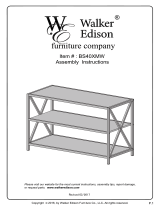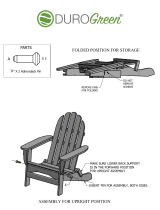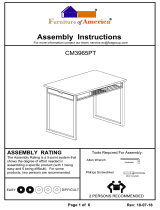
15
OPERATIONS MANUAL
WORKTOPS/UNDERCOUNTERS & SANDWICH UNITS
ANTI-CONDENSATE CONTROL (Freezers only)
1. To see the current state of the aux heaters (anti-conden-
sate), press and HOLD the “AUX HTR” button for 1 second.
RELEASE the “AUX HTR” button. The display will show the
current state of the heater (“ON” or “OFF”) when the button
is pressed.
2. To change the current state of the AUX Heaters, press and
HOLD the “AUX HTR” button. The display will show the cur-
rent state of heater operation. After 5 seconds, the heater
will switch to the opposite state and the display will return
to displaying the cabinet temperature. RELEASE the button.
The control has a built in energy saving feature for the anti-
condensate (AUX) heaters. When set to ON, the heaters will
automatically energize when conditions require additional heat,
to eliminate condensation. The “AUX” icon on the display will
illuminate when the AUX heaters are energized. To maximize
energy savings, the AUX heaters can be set to OFF, as described
above. In this state, the heaters will never energize. If you ever
notice moisture accumulating on the face of your cabinet, adjust
the AUX control to ON. This will energize the heaters and warm
the face of the cabinet, eliminating any condensation that may
accumulate.
HOW TO INITIATE A MANUAL DEFROST
This is used when a one-time additional defrost may be neces-
sary to clear accumulated ice from the evaporator coil.
1. Press and HOLD the defrost button for 5 seconds.
2. After 5 seconds, the defrost icon will illuminate. RELEASE
the defrost button.
HOW TO CHANGE THE DEFROST INTERVAL
This is used to increase or decrease the frequency of defrosts.
If the interval is set at “8”, a defrost will occur every 8 hours. If
you need more defrosts, lower this value.
1. Press and HOLD the “SET” button until “PS” appears flash-
ing in the display. Release the “SET” button.
2. Press the “UP” button until “DI” (defrost interval) appears
in the display. Release the “UP” button.
3. Press and RELEASE the “SET” button. The current defrost
interval will appear in the display.
4. Press the “UP” or “DOWN” button to adjust to the new
defrost interval.
5. Press and HOLD the “SET” button to lock in this new value.
When the display returns back to cabinet temperature,
release the “SET” button.
NOTE: Defrost cycles are time initiated and temperature
terminated with a maximum time cut-off.
HIGH AND LOW TEMPERATURE ALARMS
The controller has high and low alarm set-points. These values
can be modified per the end user requirements. There is a pre-
programmed time delay for the alarm to activate to eliminate
nuisance alarms. To change the alarm threshold values:
1. Press and HOLD the “SET” button until “PS” appears flash-
ing in the display. Release the “SET” button.
2. Press the “UP” button until “AL” (Low Alarm Setting) or
“AH” (High Alarm Setting) appears in the display. Release
the “UP” button.
3. Press and RELEASE the “SET” button. The current alarm
setting will be shown.
4. Press the “UP” or “DOWN” button to get the desired alarm
set-point.
5. Press and HOLD the “SET” button for 5 seconds to confirm
and save the new value. When complete, the current tem-
perature will be displayed. Release the “SET” button.
NOTE: When in an alarm condition, the display will alter-
nate between the cabinet temperature and alarm code.
“AL” when in a low temperature alarm condition and “AH”
when in a high temperature alarm condition. The control
will also beep and the alarm icon will activate when in an
alarm condition. To silence the alarm beeper for the active
alarm just press and release the “SET/MUTE” button.
ELECTRONIC CONTROL ERROR CODES
When in an alarm condition, the display will alternate between
the alarm code and the current cabinet temperature. The alarm
icon will also illuminate and the beeper will activate. If there is
a regulation probe error, the display will just show alarm code
“E0” and not flash the cabinet temperature. If there is a probe
error, you must contact your service provider immediately.
Alarm Code Alarm Description Notes
E0 Regulation Probe Error Located in return air stream
E1 Evaporator Probe Error Located in evaporator coil
E2 Ambient Probe Error Located on side of electrical box
LO Low Temperature Alarm Reference “AL” parameter
HI High Temperature Alarm Reference “AH” parameter
• Error code “E0”: Control will operate the appliance in a pre-
programmed ON/OFF cycle based on time, not temperature.
• Error code “E1”: The control will still go into a defrost but
will terminate on time, not temperature.
• Error code “E2”: The aux heaters will not operate.
• If the control goes into a high/low temperature alarm, the
beeper will sound and alarm icon will illuminate. When the
temperature goes below alarm threshold for high tempera-
ture alarms or above alarm threshold for low temperature
alarms, the control will go back to normal display.























